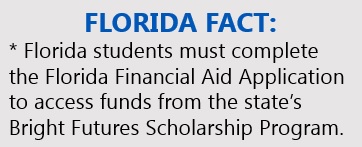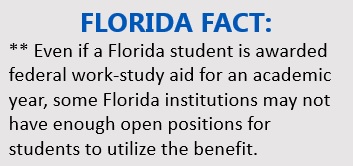 By Ainsley Ash, National College Attainment Network
By Ainsley Ash, National College Attainment Network
Thank you to our friends at the National College Attainment Network for sharing this information with FCAN’s audience. We hope that it will help all individuals better navigate the financial aid award letter process.
Now that many students have been offered admission to colleges and universities across the country, financial aid offers will soon follow.
These offers — often referred to as award letters — are sure to spark conversations about college affordability between students, families, and college attainment professionals. Here are few critical things that students and families need to know about financial aid offers.
Understanding financial aid award letters
For all the excitement they bring, financial aid offers have a reputation for being a bit confusing. In 2018, the think tank New America and NCAN member uAspire analyzed over 500 financial aid award letters. Their research found that many of the letters used jargon, omitted the complete cost of attendance, and left students without clear next steps.
But with the right information, analyzing and comparing financial aid offers from colleges and universities is a process students and families can tackle.
The basic components of any award letter are the same. They should include the details of the types of financial aid an institution is offering and an estimated cost of attendance. With that information, students can determine the net price, what they will actually have to pay.
Let’s start by breaking down the actual financial aid being offered.
The different types of financial aid
Broadly, there are four types of aid: federal and state grants, scholarships, work-study, and loans.
- Federal and state grants do not have to be repaid. This includes grants like the Pell Grant, the Federal Supplemental Educational Opportunity Grant (FSEOG), and state-specific grants. Eligibility is typically determined by the information students submit on their Free Application for Federal Student Aid (FAFSA)*. Students who receive these grants will have to complete the FAFSA every academic year to maintain their eligibility.
- Scholarships do not have to be repaid. Students should pay attention to whether or not scholarships have yearly requirements, such as maintaining a certain GPA. It is also crucial to know if each scholarship is a one-time award or if it is recurring.
- Federal work-study is money that the student earns. These funds might be included in the financial aid offer as just another grant, but work-study dollars are earned through part-time employment on- or off-campus. The student will have to apply for work-study positions, and work-study aid is not guaranteed from year to year**. Read this post from the Department of Education to learn more about all that work-study entails.
 Loans have to be repaid with interest. They are either subsidized or unsubsidized. For direct subsidized loans, the U.S. Department of Education pays the interest on these loans while the student is in school and for the six months after they leave school. For direct unsubsidized loans, interest begins accumulating while in school, and the student is responsible for this interest.
Loans have to be repaid with interest. They are either subsidized or unsubsidized. For direct subsidized loans, the U.S. Department of Education pays the interest on these loans while the student is in school and for the six months after they leave school. For direct unsubsidized loans, interest begins accumulating while in school, and the student is responsible for this interest.
If offered a loan, students should only take out as much as they need — it’s not necessarily best to take all that is offered. For example, if the student only needs $5,000 for food and housing, but $7,500 is offered, they should only take $5,000. Students may be tempted to have the extra money in college, but they should know that they will eventually have to pay back those loans with interest, which will be far more expensive in the long run.
What to consider when reviewing award letters
The award letter should show the itemized aid offered for the fall, the spring, and their total for the academic year. Students should ask themselves these questions when reviewing award letters:
- Will I automatically receive this aid each year?
- What are the eligibility requirements to continue receiving recurring awards?
- When do I have to accept or decline these award offers?
- If loans are offered, do I want to accept them?
Once students have added up how much money a college is offering, they should compare that against the included cost of attendance estimate.
Total Cost of Attendance = Direct Costs + Indirect Costs
- Direct costs: These are charged to the student by the university and often include tuition, room and board, and fees. This is an estimate of what the student will owe the university.
- Indirect costs: These are the student’s estimated expenses, such as books and supplies, travel, internet, and other personal expenses. Actual year-to-year costs will vary. For instance, the student may choose a less expensive housing option or might have higher travel expenses.
Once students know the financial aid offers and the costs of attendance, it’s time to find the net price if it was not included already. In New America and uAspire’s study on award letters, only 40% included a net price – the remaining out-of-pocket costs.
To calculate the net price, subtract the student’s financial aid total from cost of attendance. This is the amount that the student will actually be responsible for. A few ways to close these gaps include paying with savings, applying for scholarships, working or taking out additional loans.
Luckily, there are resources out there to help students and families crunch the numbers and weigh all their options. Check out these free tools:
- “Make Your Decision” worksheet from the Educational Credit Management Corporation
- “Compare Aid Awards Calculator” from BigFuture
- “Financial aid offers comparison” worksheet from Sallie Mae
- UAspire’s College Cost Calculator
- College Raptor’s College Offer Letter Comparison Tool
If, at the end of their calculations, students find that their financial aid is still lacking, they might consider writing a financial aid appeal letter to ask the school to potentially offer more scholarships or loan and grant options. SwiftStudent is a resource which helps students through this process.
When deciding where to enroll, the bottom dollar is not the only thing to consider. Students and their families should research potential schools’ graduation and retention rates, along with how their net price stacks up against other students’. The Department of Education’s College Scorecard is a useful resource to make those comparisons.
Where to find help
If students and families still have questions about financial aid or award letters, they should contact a college’s office of financial aid to get answers. These professionals should be able to provide specific information related to their institution and answer additional questions.
While comparing financial aid award letters can be tedious, it will help students and their families make the best decision based on their circumstances.
RELATED ARTICLES:
Visit FCAN’s “College Ready Florida” page and learn about our statewide initiatives
